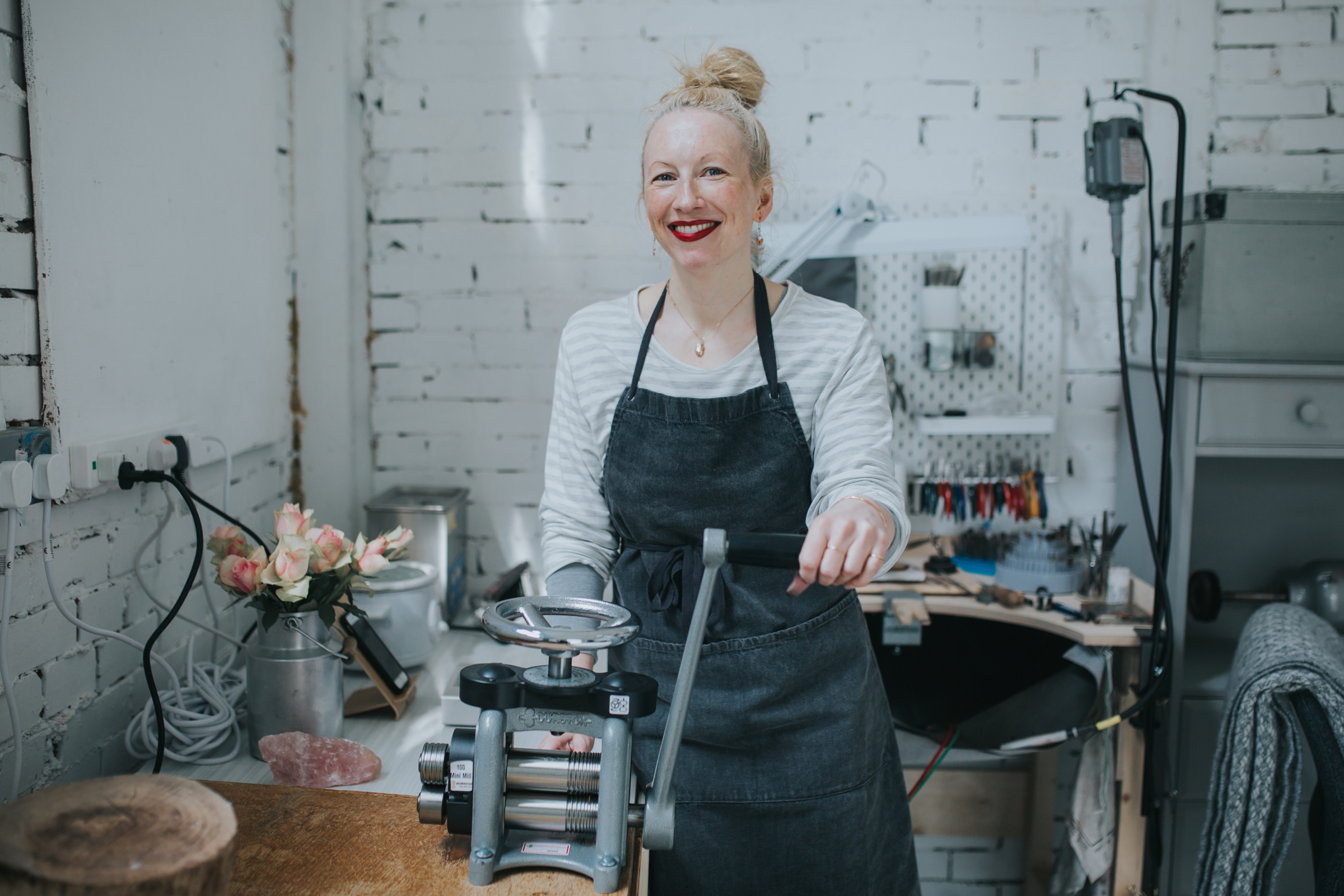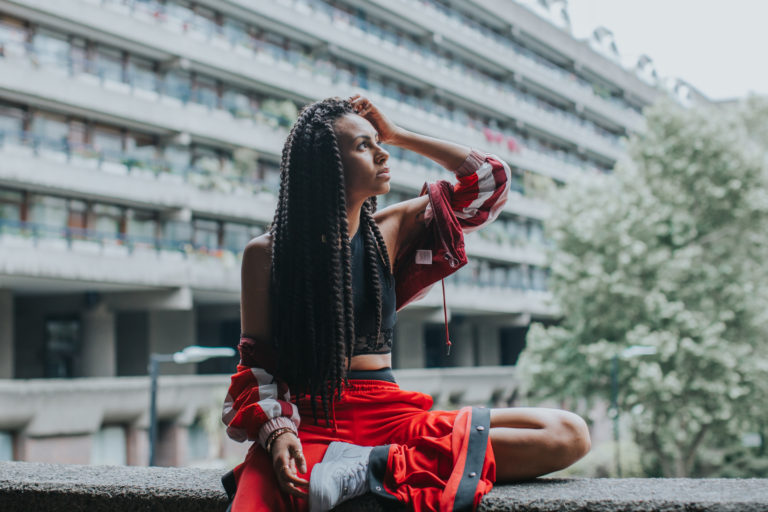
I would like you to meet Jo from Tootsievalentine. I met Jo for the first time a few months ago when visiting Sas Petherick works shop in London. I wrote about this lovely day here. She sat next to me and I just loved her energy and how calm she was. The whole day was special to me and I met so many different women and I can’t wait to show them to you
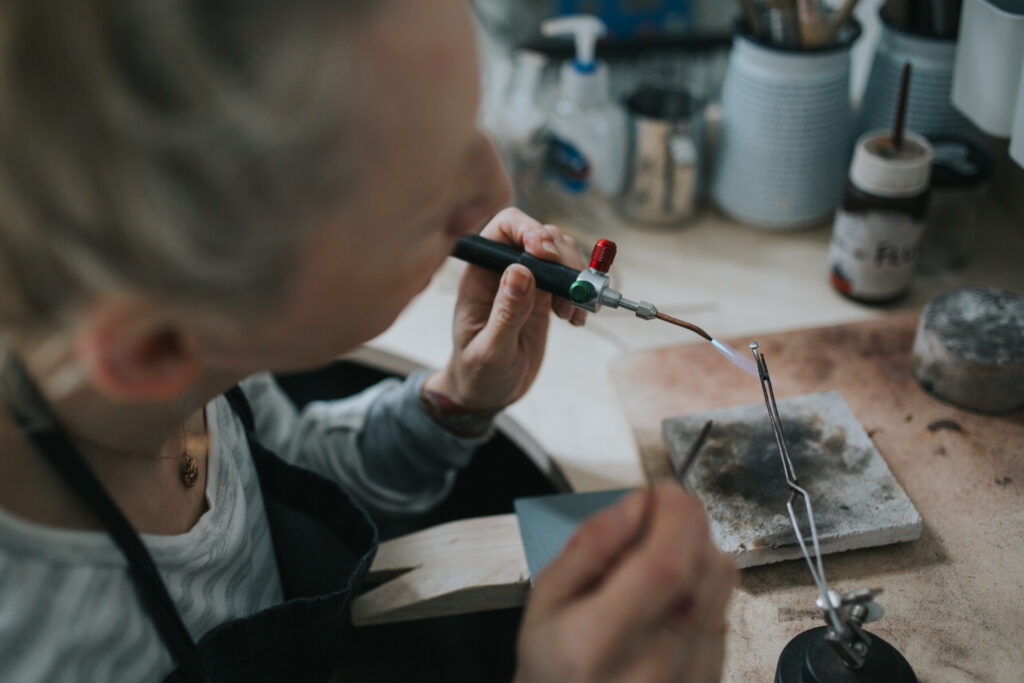
When I find out that Jo is jewellery designer and using fair trade gold, I was so impressed. I asked her if she would be interested in a photo session and interview with me for my blog and she agreed. The day when I visit her new workshop on location outside of London was the day that I drunk the most tea in my life! I do love tea, but Jo is the winner. Still can’t remember how many cups we had. I really hope you will enjoy this interview as much as I did. Jo, thank you very much for letting me be part of your day and showing me that we can follow our dreams.
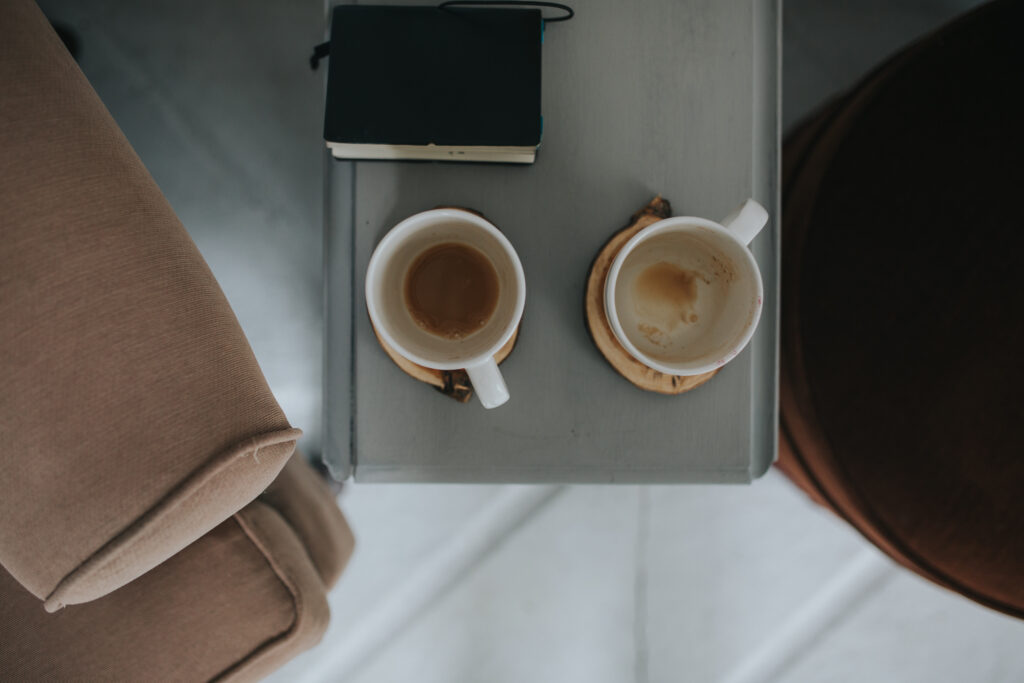
Mina: Can you please tell us a little bit about your background?
Jo: I started my working life wanting to be a professional dancer. Before that, I was always doing something creative, but my first job after school was a semi-professional dancer and teaching aerobics. After doing this on cruise ships for a few years, I realised that the career of a dancer can be really short. So I started thinking about other career options, one is joining the ambulance service as a paramedic, or being a nurse or a midwife. I thought I should do the whole “proper” career thing with good prospects, steady salary and pension. So, I ended up training as a paramedic, and I did this job for 12 years.
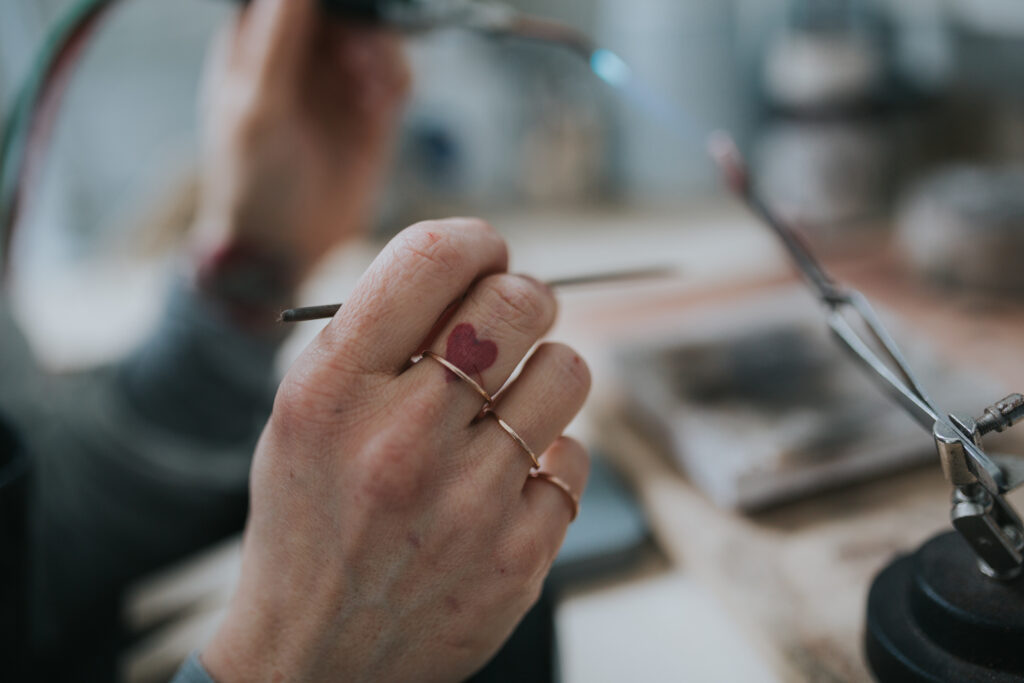
Mina: From dancer to paramedic. Very interesting and very different. When did all the art thing started?
Jo: All this time I was still doing creative stuff as a hobby. As I was growing up, art/design and craft were (along with dance) my two favourite subjects. I was never an academic. But when I was at school, the only options with art and creativity were becoming an art teacher or an impoverished artist, always living on the bread line. It wasn’t like these days when you can make a career of it. I was involved in lots of creative evening classes so I could keep up my creative skills. I would experiment with clay, wood, textiles and with metal and I would always be making jewellery for myself as well as making dream catchers, flower wreaths, any material as long as I was making. I always had it as a hobby. But because of the nature of the job as a paramedic, I knew that I wouldn’t be able to do it forever. It’s a tough job. So, I started thinking about what I could do instead. And creativity was such a passion. By that time I was already concentrating more on metalwork and jewellery. I was already making wedding rings for friends and family. It was just something that I loved so much and wanted to carry on doing. When it got very difficult in my job I started thinking how I could make a career out of it and if I could turn it into a job.
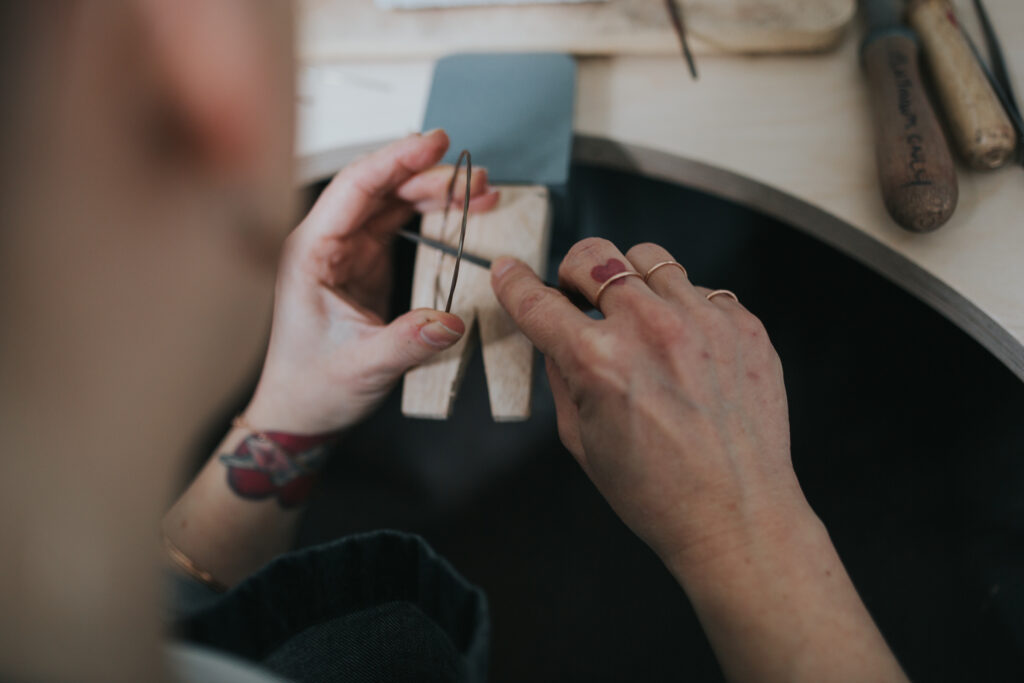
Mina: Is there anything, in particular, happened at you work that you start to think about this?
Jo: Yes, the London July bombings in 2005. Thankfully these kinds of major incidents aren’t common, but it was enough to make me think, okay, I’m not sure if I can do this job forever. But it took a long time for me to actually leave. That was in 2005, and then it took another 7 years to be in a position where I was able to leave. I knew I needed a little bit more training to do it professionally. So I started with evening classes, to increase my skills. Ideally, I wanted to do an apprenticeship, but at that time there was nowhere to do it and to learn more about silversmithing you had to do a degree. I changed my shifts at work so I could do a degree. During the week I would go to university from Monday to Friday, then I would go straight from uni to my night shifts, on a Friday, Saturday and Sunday. And then back straight to uni on Monday morning.
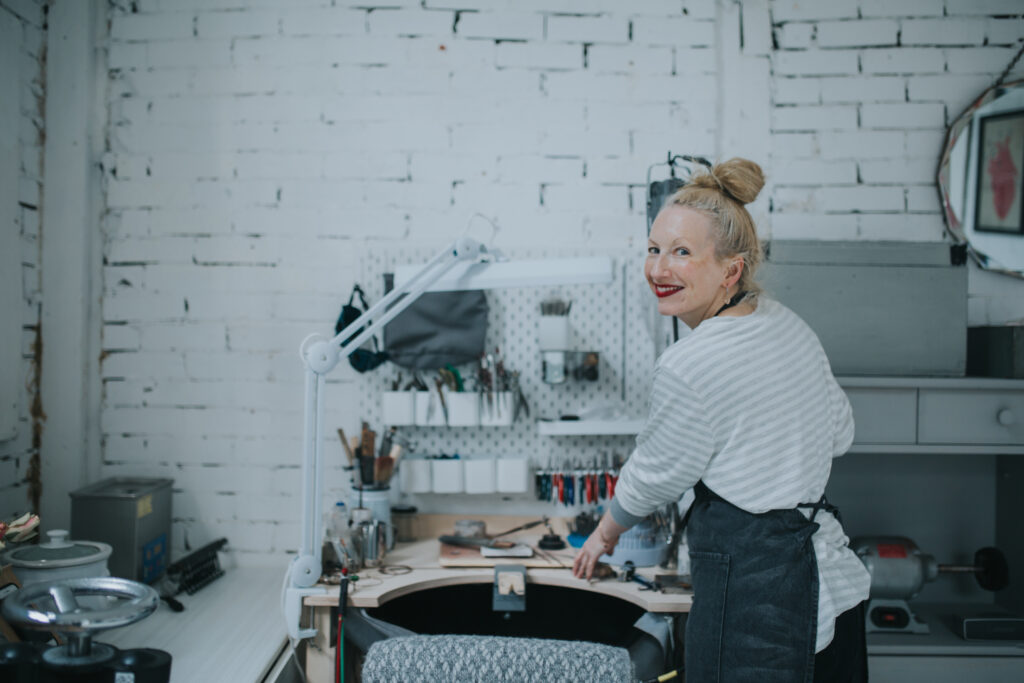
Mina: For how long were you doing this?
Jo: 3 years.
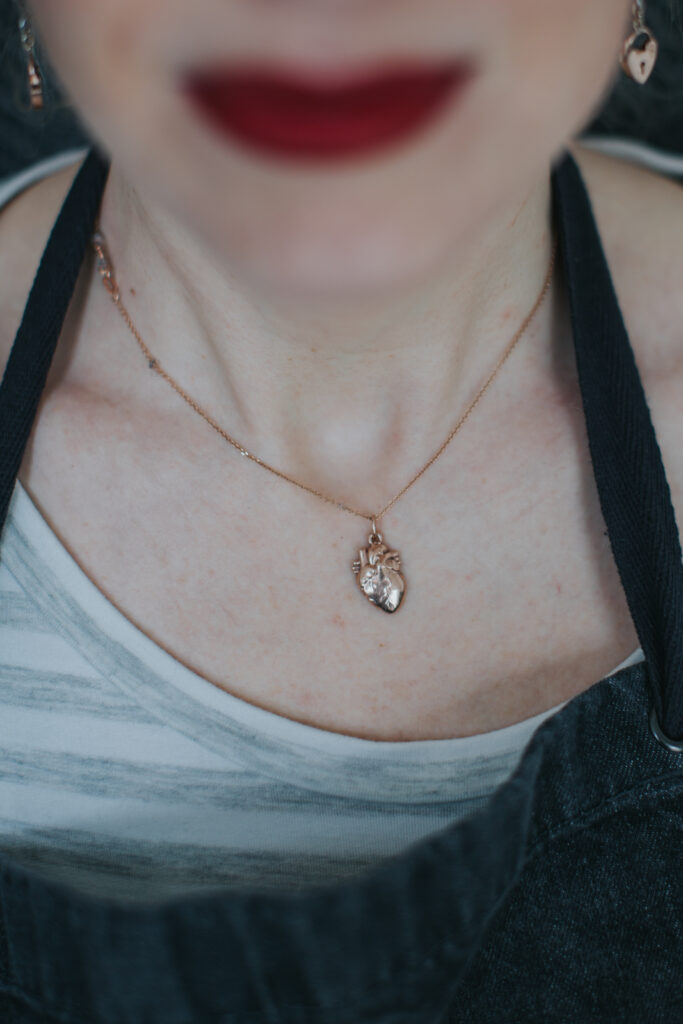
M: Wow, that’s amazing, well done you. So proud of you. Can I ask you what is the difference between goldsmith and silversmith?
Jo: Thank you. Silversmiths and goldsmiths are both skilled trades. The term goldsmith is what they used to call jewellers who made the items rather than just sell them. Goldsmiths tend to work mainly with jewellery in platinum and gold – but also silver. Silversmiths work mainly with silver and usually make functional tableware and functional items such as vases, teapots, cutlery. So I am trained as a goldsmith.
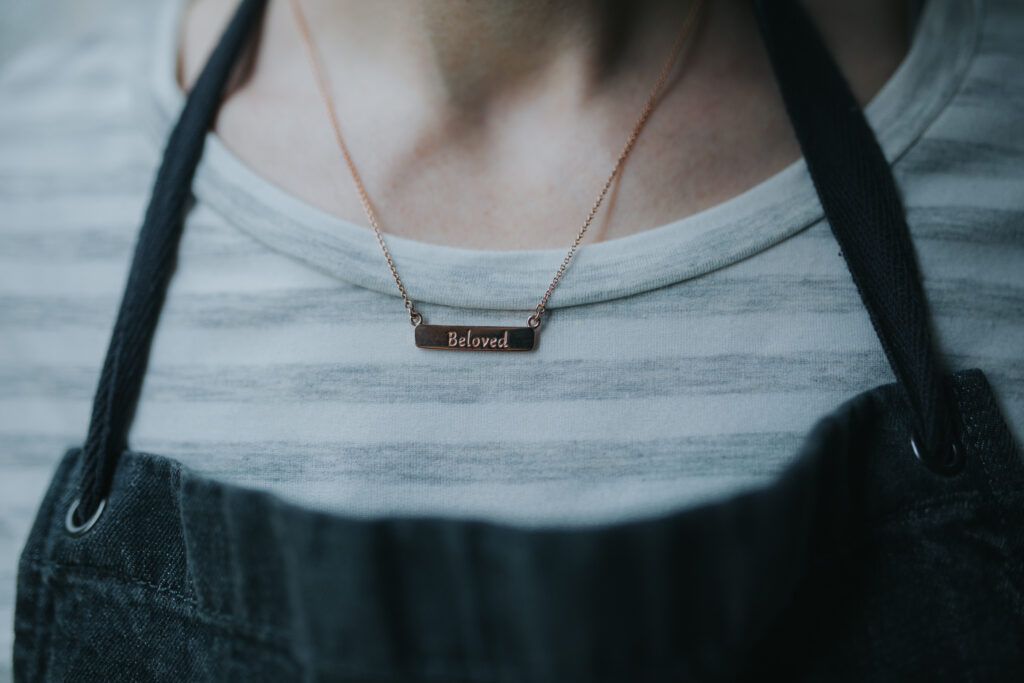
Mina: Why jewellery?
Jo: Because there’s something special, incredibly emotional and sentimental about jewellery. I loved working with metal; it’s a great material to work with. And because wearing jewellery is a way of carrying something precious with you all the time and I like this idea a lot. Like a wedding ring, for example, people don’t like to take them off. Sometimes I make clothes too, but they are functional, you take them off, and change them all the time. Jewellery fascinated me because there is this kind of priceless amulet and it’s special, it can be given to you, or you could give to yourself to remind on a special day or special time. I wear pieces that I never take off. I love the idea that you can change your outfit and accessories, but jewellery can be kept on all the time. You can wear it close to your skin; it’s really intimate.
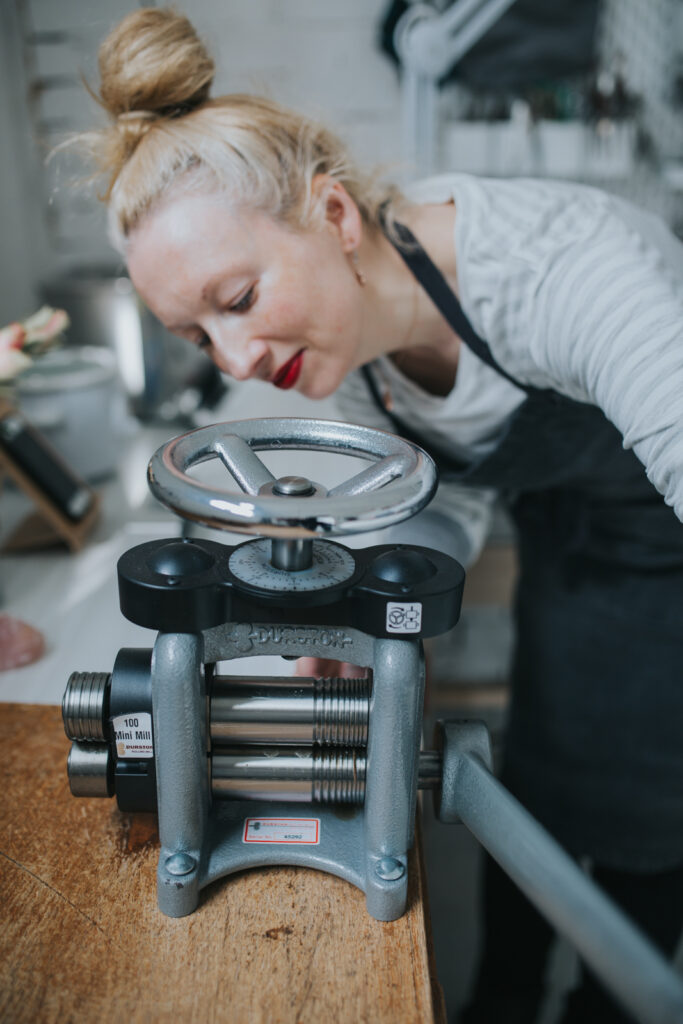
Mina: Where did idea for heart came from, because it is like your trademark, right?
Jo: Yes, it’s my trademark! It’s difficult to answer this one, it feels like a chicken and egg scenario. My birthday is on Valentine’s Day, and ever since I was little, I’ve been given things with hearts for presents. Pretty much always red hearts and red is one of my favourite colours anyway. I had heart cushions made for me, I’ve been given jewellery with hearts, jumpers with hearts, books with hearts….in fact, I’ve been given every type of object with a heart on it! If I try to look more objectively and ask myself, would I like hearts that much or would they mean so much to me if my birthday wasn’t on Valentine’s Day? And the answer is yes. It goes back to sentimentally, to love and heart representing love and positive emotions.
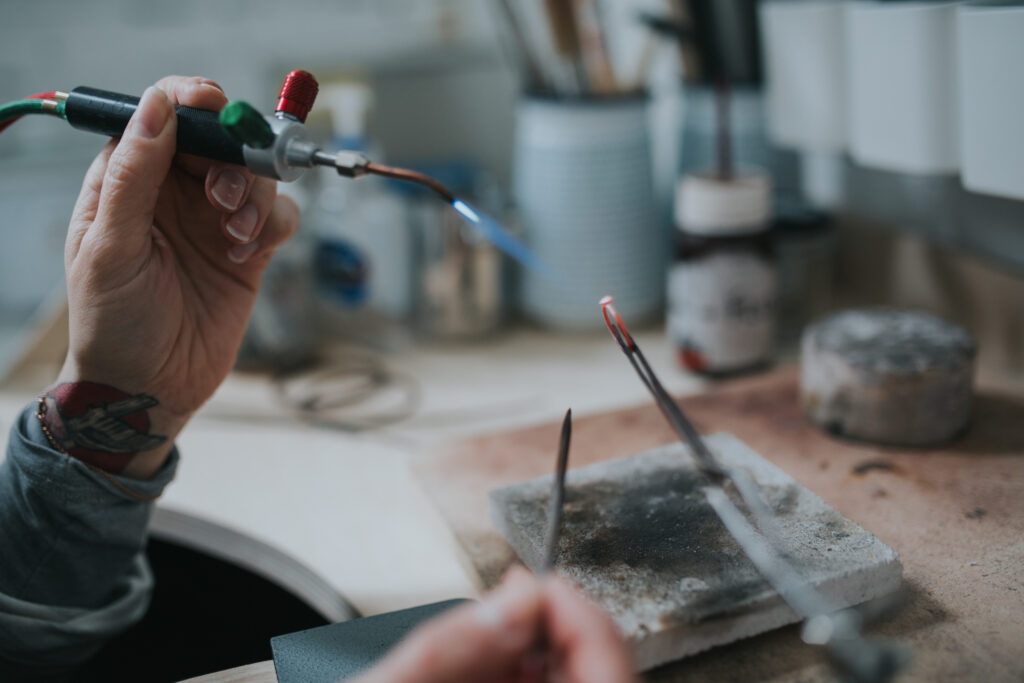
Mina: Not always though.
Jo: That’s true, but ideally positive emotions. They can represent heartbreak too. I like both traditionally shaped hearts and human hearts. There’s a link to human hearts with my old job, being a paramedic. For example, when I was designing the heartbeat range, I took it directly from my own ECG.

Mina: That is a very good idea.
Jo: The heart for me has always been a source of fascination. Part of it is because my birthday is on Valentine’s day and also because of its metaphorical meaning, the link with love. We never talk about any other organ as much as the heart. We always say, omg my heart is breaking, my heart bleeds for you, omg my heart is beating so quickly I am so excited, etc. Everything is around the heart and I find it fascinating. The map of the human heart is the one map that is the least understood, metaphorically speaking. We know that cardiologists know it inside out, but emotionally, it is an endlessly intriguing terrain. And I really wanted to be able to express this in jewellery.
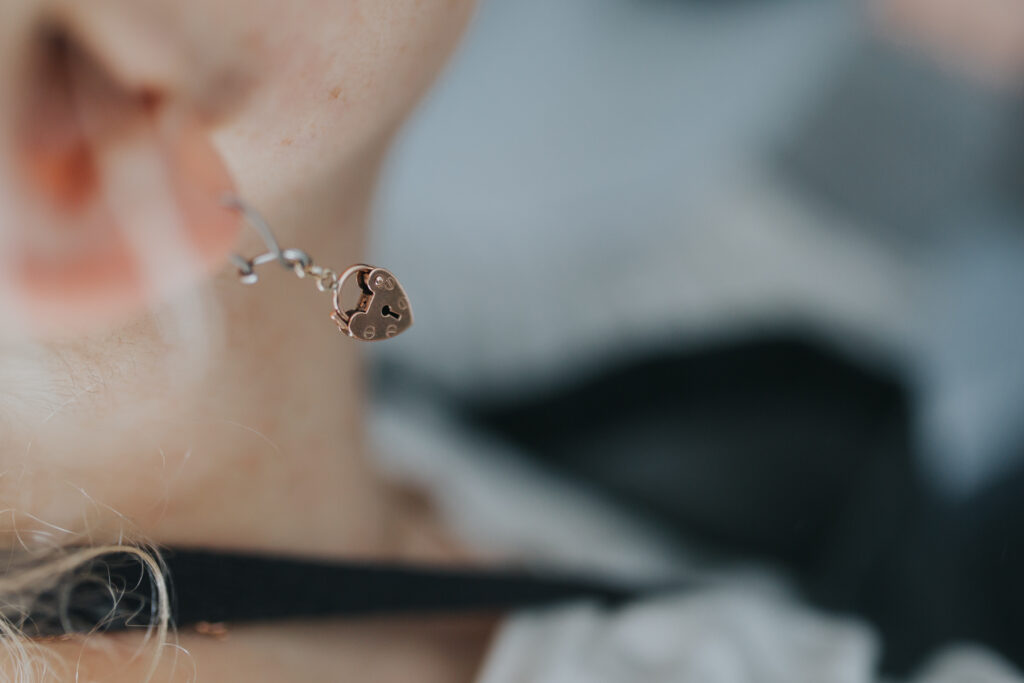
Mina: Can you describe yourself now?
Jo: I am passionate about creativity, and I’m someone who loves expressing myself through creating things. I would happily describe myself as a maker. My chosen material is a precious metal. I’m at my happiest when I’m making something. Also, I would describe myself as a passionate outdoor person and nature lover. I love hiking and camping, anything outdoors in the wild.
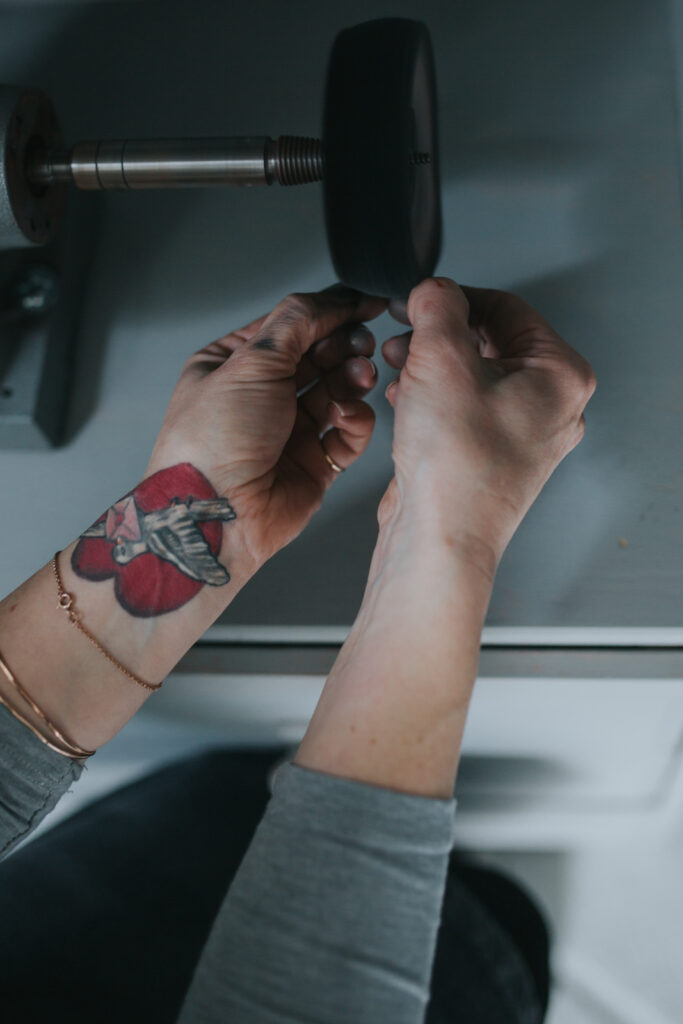
Mina: What is the biggest thing that you learned since then from business point of view?
Jo: Omg, I’ve learned so many things. Firstly, things always take longer than you think, always, always, always and second, things always cost more than you think always, always, always. Never ever underestimate how long it will take and how much it will cost. These have been hard lessons for me to learn, because I made lots of mistakes along the way. I am pleased where I am at the moment and where the business is going. I made some costly mistakes and knew its part of learning, and it’s been hard. So, if you are starting your business, double the amount of time you think you need and give yourself lots of financial room. Third thing, do not be afraid to be realistic. There’s nothing wrong with allowing yourself extra time to set-up right.
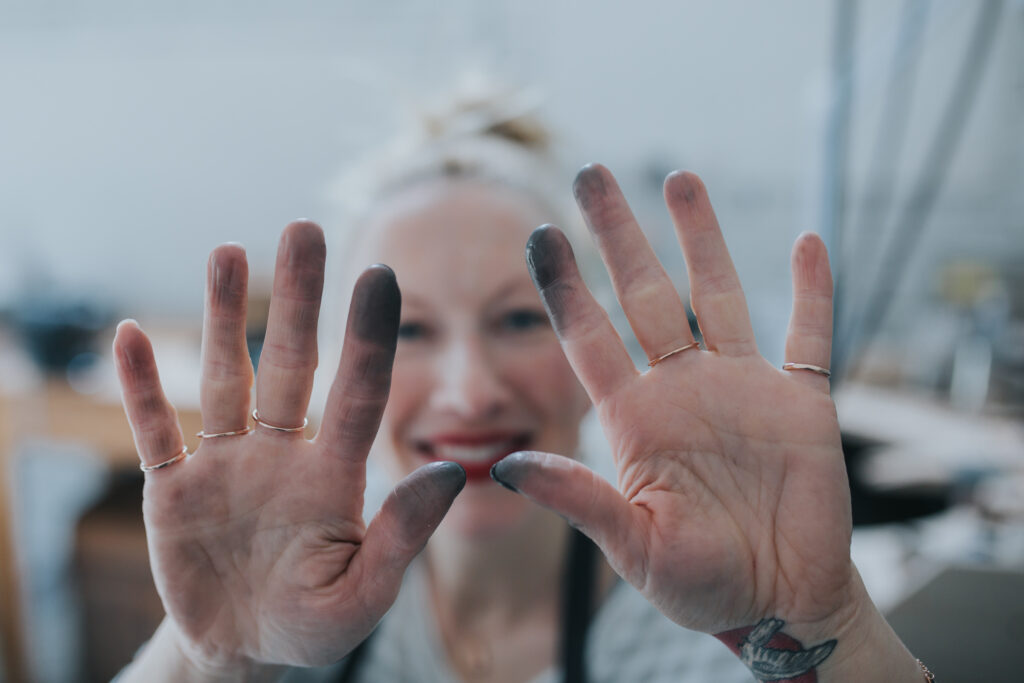
Mina: What would your advice to someone who is just starting their own business?
Jo: Give yourself plenty of time (then double it!) and have a good financial buffer. Don’t see your failures along the way as devastatingly bad. Some ideas will work, some won’t; it’s all a process of learning and getting better as you go along. You don’t need to know everything before you start, and there’s never a perfect time but it’s helpful to have some kind of framework. For example a good business plan. I’ve funded the business with my own money the whole way along so far, so I didn’t use my business plan to get a loan or for investors to come on board. But I did one for myself to have some kind of structure and plan in place that I could try and stick to and work towards. I had NO business experience before I started and I had to learn as I went along (am still always learning!) but it hasn’t stopped me from expanding. Also, my advice with a creative business is, be flexible in terms of how the business is moving. If people aren’t buying what you poured your heart into designing, don’t take it personally, just try to see what it is they want to wear and want to buy and
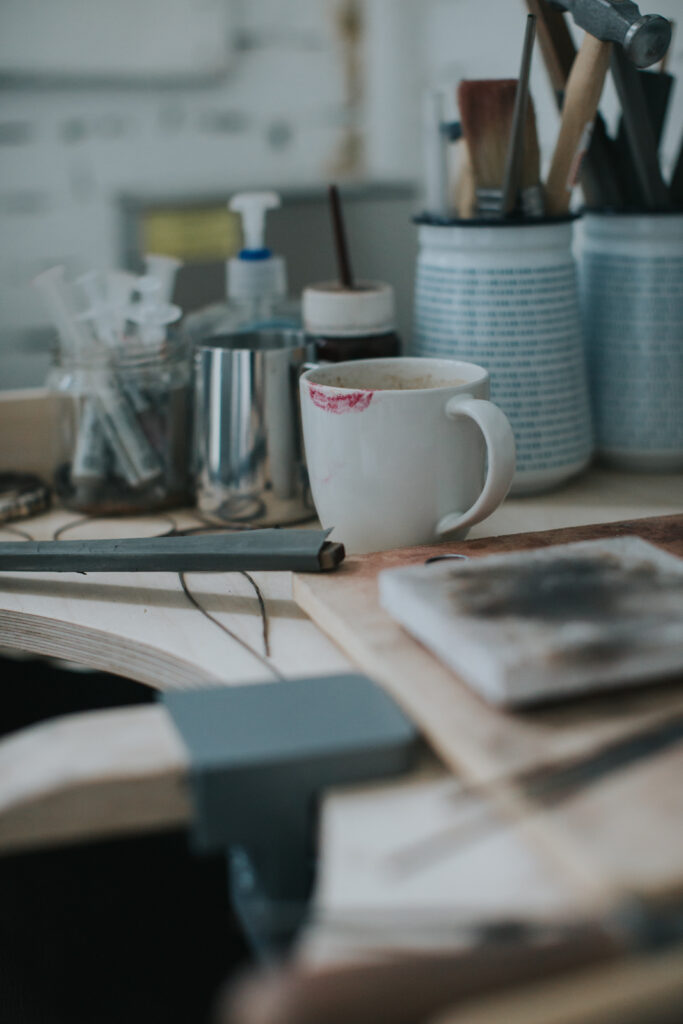
Mina: Do you mean not to take criticism too personally?
Jo: Yes, for example, if people don’t buy a certain design, change tack, unless you are in the enviable position of not having to worry about profit margins and are doing it purely for personal pleasure! What I personally like to wear isn’t necessarily what other people want to wear. I had to learn that what I like – the designs that are important to me, will not necessarily work for someone else. Be flexible enough to bend and move with what people want, if you want to sell your designs. At the end of the day, you are running a business rather than a hobby. You are doing this to make a living, and you have to be flexible. You have to not take it personally. It’s hard, sometimes you ask yourself, “why people are not buying this?!?!, I put effort, blood and creativity into this, why they are buying something that takes me no time to make?” You just have to say okay, it’s not working, there is no point spending more time on it. Look what is working and build on that. I am always looking at figures and what is working and what’s not. It’s not always about you, it’s about what someone wants to buy.
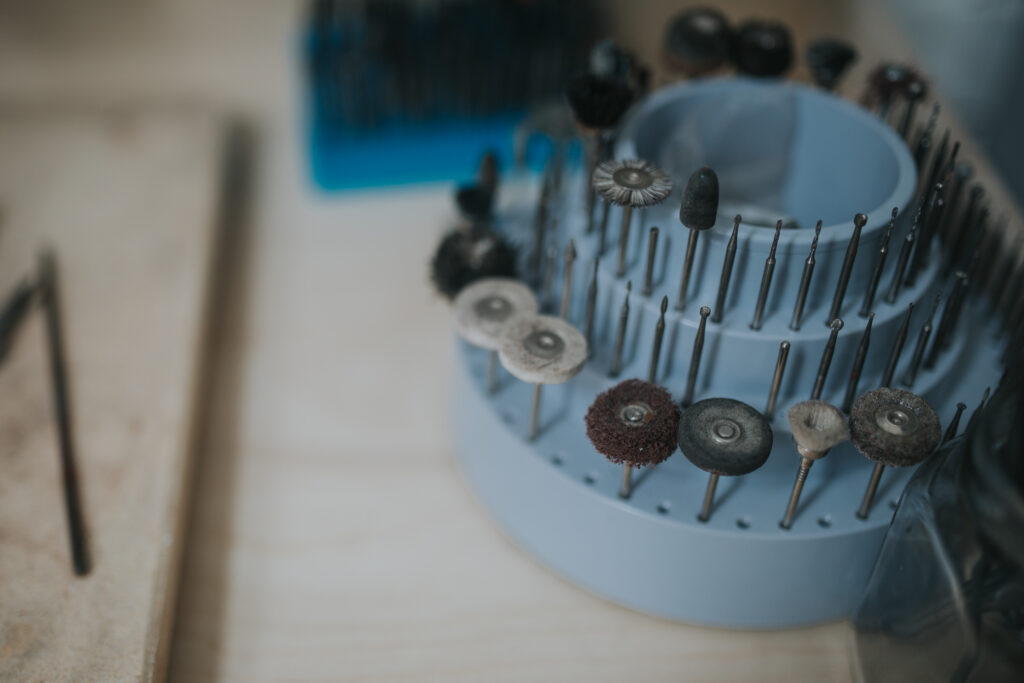
Mina: End of the day they are all your designs anyway.
Jo: Yes, never be afraid to keep looking, changing and adapting to the market. Pay attention to what people are buying and what they want. Feedback can be really hard, but most of the time it’s a gift pointing you in the right direction.
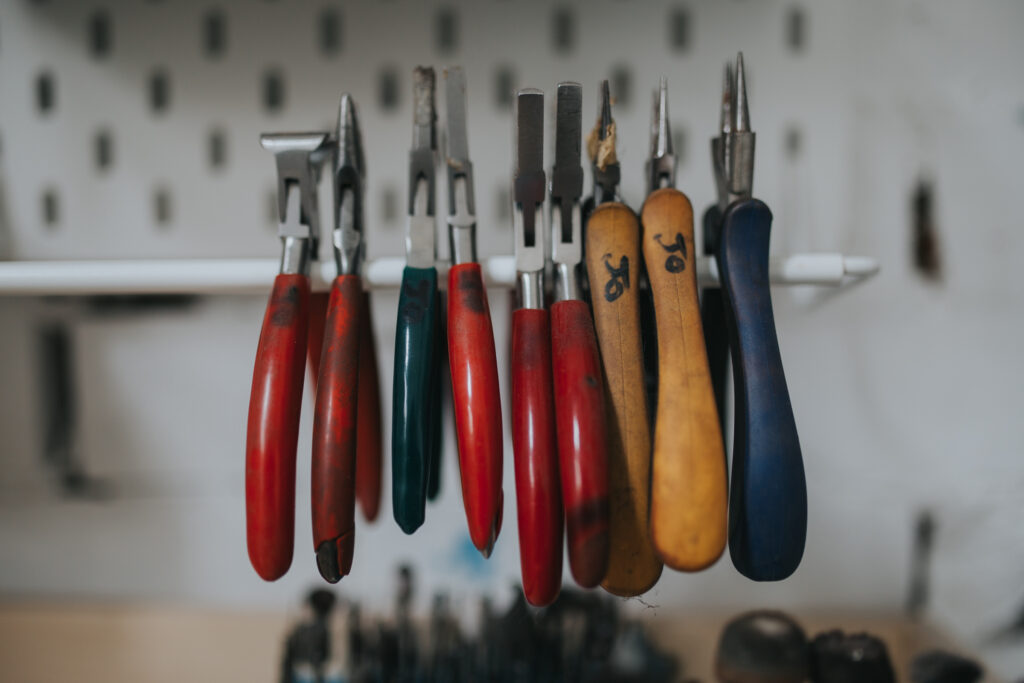
Mina: Would one of your advice be then, do not be afraid of critics?
Jo: I would say, there is a different way of taking it. It would be easy to be insulted and take it really personally. In business terms, you can’t afford to take it personally, because if you want to evolve and expand it’s my belief that you have to improve your products. I think you should try to reframe each criticism as feedback. If someone describes one of my products as shit, I say okay let me listen to what they are saying; why they can’t wear it like that. Is it too big, it’s too heavy, how can I make it more wearable?
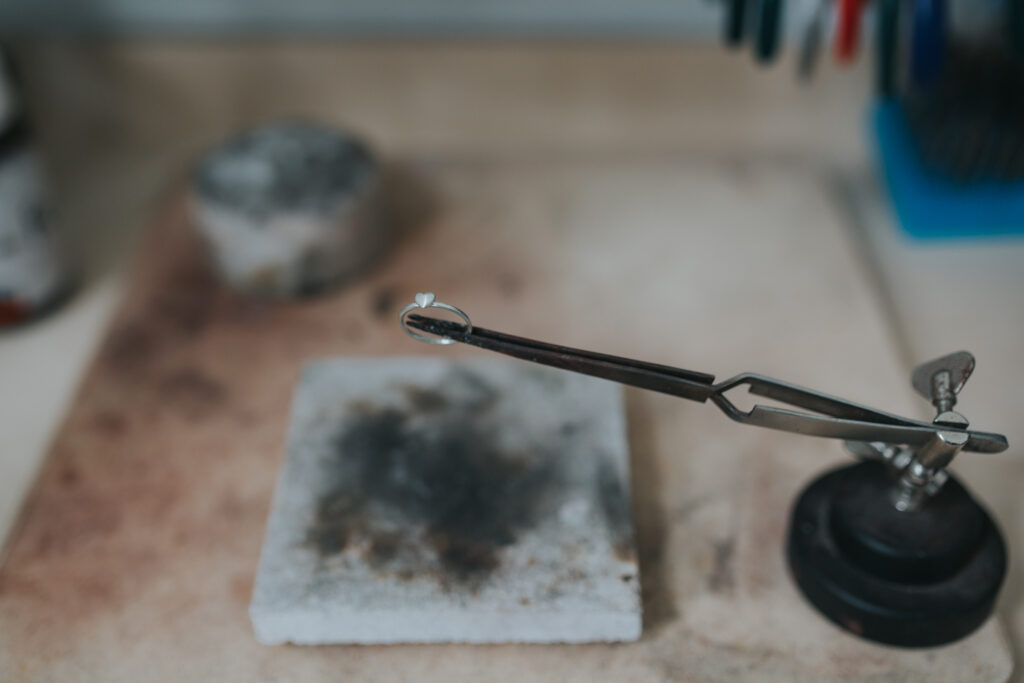
Mina: Make sense.
Jo: There’s nothing wrong with moving towards what people want and what they want to buy. Even though it can often wound the creative ego!
Mina: Where do you go for inspiration?
Jo: I am fascinated with anatomy, with human hearts, dark fairy tales, and narratives more than objects. People’s stories inspire me. And I am trying to find a way of translating these into different pieces of jewellery. How can the essence of someone’s passion be turned into a piece of jewellery. Stories inspire me. Although my designs are not inspired by nature, I find nature inspiring, if that makes sense! For example, I feel creatively inspired when I’m relaxed and have given myself sufficient headspace. And by spending time in nature, I get that headspace.
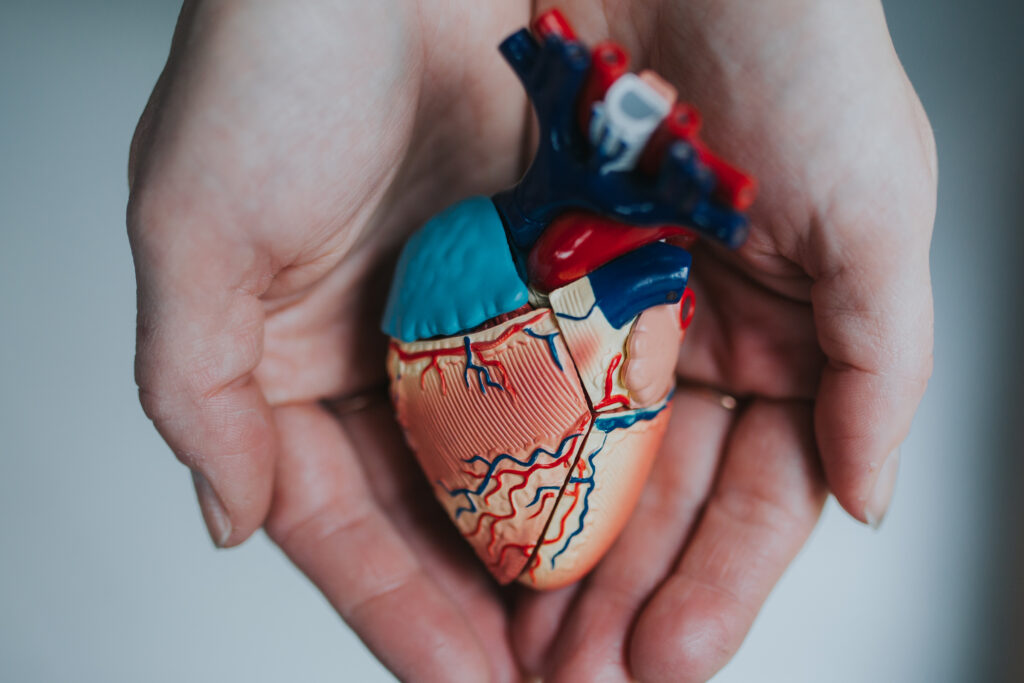
Mina: What do you do when you feel lost?
Jo: Creatively, I would go back to basics, to my skills, go back to the essence of what I’ve been doing. I get back to making. I just make for the sake of making so that I can reconnect with the material, reconnect with my skill. I always feel more comfortable making. When I feel lost, I sit on my bench and just do my thing…to remind myself that I can do it.
Mina: To connect with your inner you?
Jo: Exactly, I remind myself why I’m doing this and it’s because I love the material that I work with. I love making, using my hands. Reconnecting with my reason for doing it, with my skill and passion. If I’m feeling generally more lost, (not just with business or creative stuff) then I go outside into nature, it’s a cure for most things for me, for example, a long hike. Mobile zen mode. That always helps.
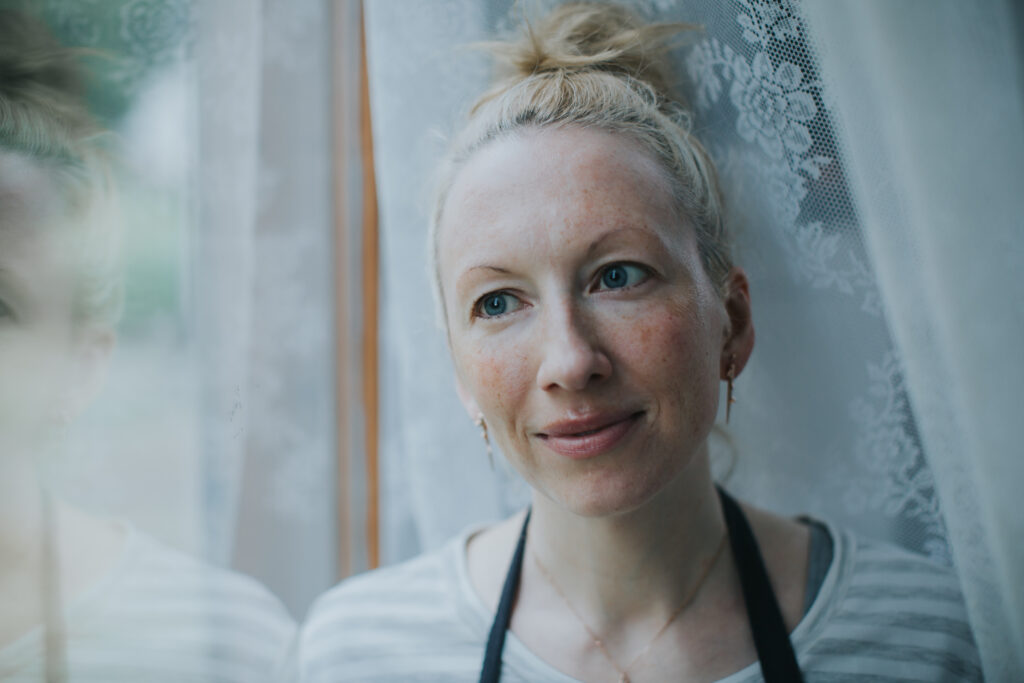
Mina: What do you do when you feel stuck in business?
Jo: If I feel I’m stuck with something business related, I talk to my friends who also run their own successful businesses. I would brainstorm with them. Although they are not necessary in creative businesses, they give me ideas, new perspectives, business advice, and there’s always helpful feedback from them. It’s good to have fresh eyes on a problem and from a source external to the creative world.
Mina: Tasha from The Fuck it Society said, “If you ask people for an opinion, they will give it to you.” So, to be careful who you ask for an opinion. What do you think about that?
Jo: A lot of my friends are mostly in completely different industries to me, and I really value their input. They don’t always tell me what I want to hear, but that’s the good thing! They help me to push myself, to see things differently, to consider different options. Even if they say something I don’t particularly like, they do it in a supportive way to encourage my growth. I think there’s a huge difference between being told something we don’t want to hear from someone who wants to help us expand and succeed, and being told something we don’t want to hear from someone who really wants us to fail. I would say surround yourself with people who encourage you, support you and help to nurture your ideas – but who will also be honest with their feedback.
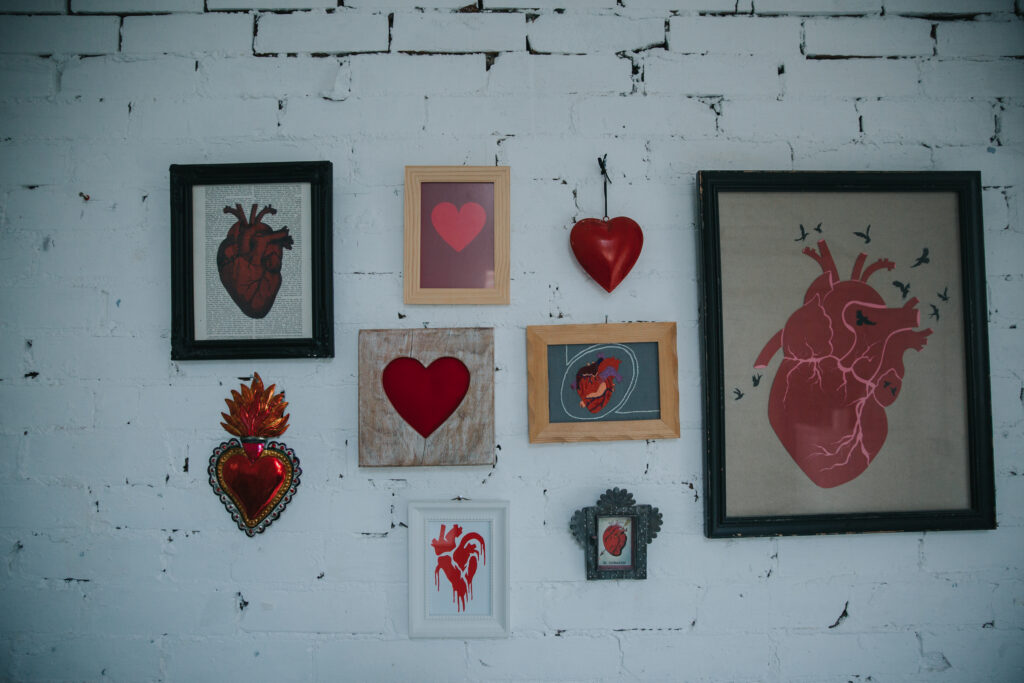
Mina: Can you explain the whole process of making jewellery from idea to end, for someone who does not have any idea about jewellery?
Jo: A design usually comes from a sort of narrative, some kind of idea in my head. So I would start by scribbling down some notes, before I even start drawing. When I have words on paper, I would start forming them into a design and start drawing it out. But quite often I would just start hammering with a piece of copper. Just to see if my idea might work. And then I would start forming a model out of it. I have two different ways of producing designs. If something worked to the point where I can see the model, and I’m happy with it and that I can see it could work in metal; I would either hand make it or would send it to my CAD man who will put my design through a computer, print it out in resin and then get it cast in precious metal. So, I use a combination of modern technology and centuries-old metal forming techniques.
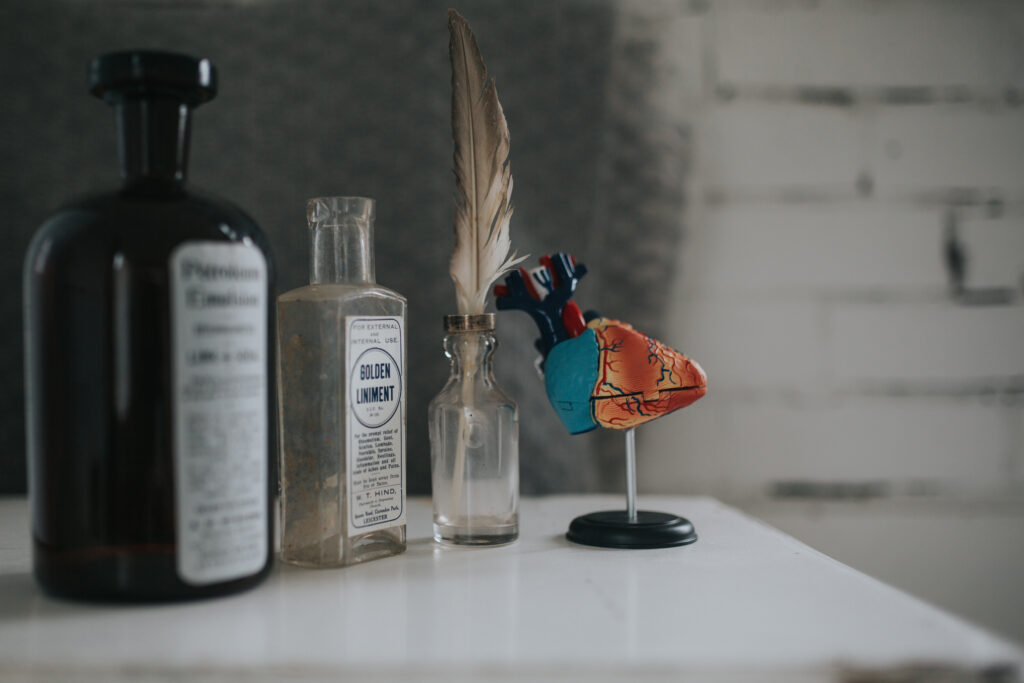
Mina: What is your best seller and your favourite piece?
Jo: There are a few, but one of the main ones is the human heart pendant. Closely followed by the Triple Thorn Earrings. My favourite, predictably the human heart pendant for sure! This is my signature piece. This is where it all started. It needed to be anatomically correct too, because of my old job! I would have too many people (friends still in the medical profession) pointing out that I’d missed a vein, had I made something that looked like the essence of a human heart but was missing vital structures!!
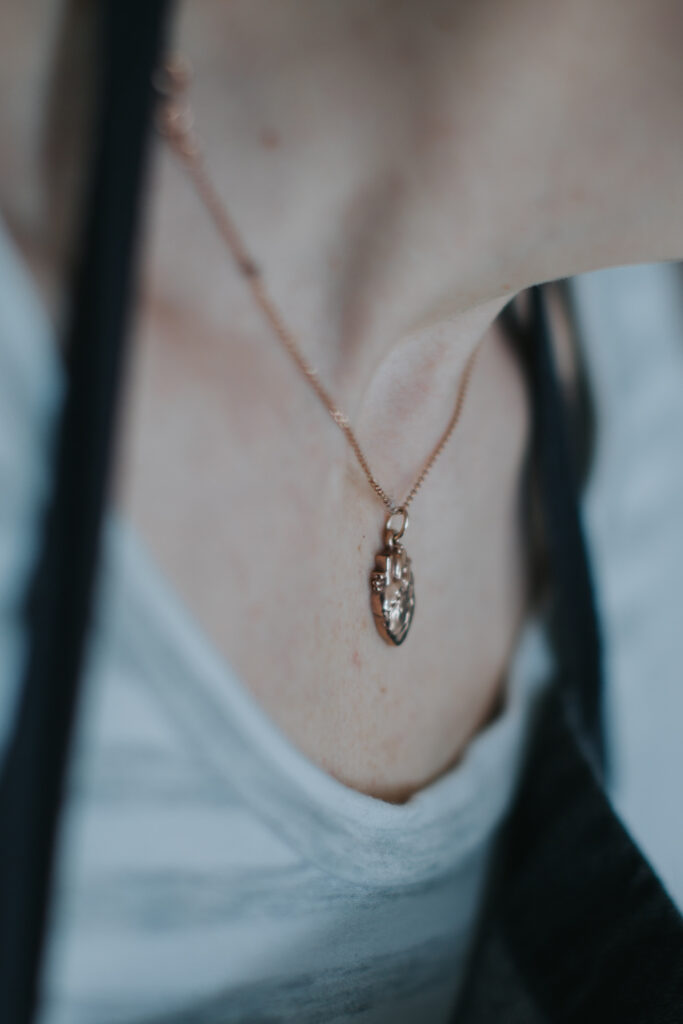
Mina: What is fair trade gold?
Jo: Fairtrade gold is the world’s first independent ethical certification system for gold that guarantees that gold mined on a small-scale has been done so responsibly. It also guarantees a minimum price for the small-scale artisanal miners, as well as a premium to spend on improving their businesses or on community projects, such as education, clean water and healthcare. Fairtrade certification means these small scale-miners meet Fairtrade Standards. And the gold has a completely transparent and traceable supply chain from the mine it comes from right up to the moment it reaches the customer. The gold industry is a dirty industry in general. Fairtrade gold means there is no child labour involved, there’s reduced environmental damage and it hasn’t been passed through any corrupt supply chain. It’s modestly more expensive, but that premium goes straight back to the people who are mining it.
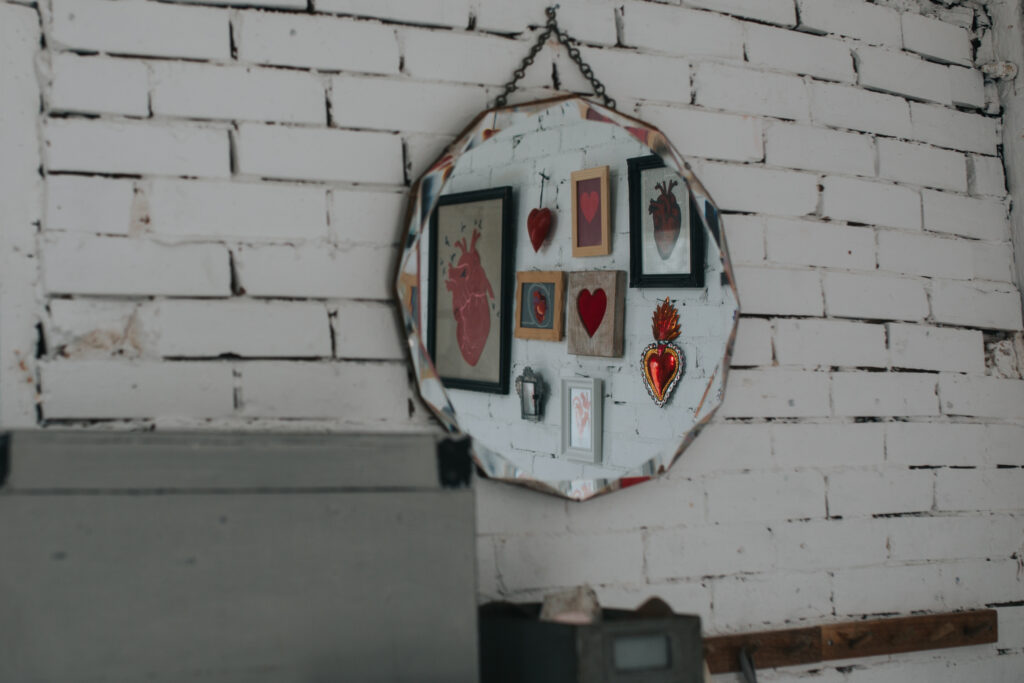
Mina: Is there anything that you would do differently?
Jo: Lots of things! That’s a whole interview in itself! While setting up in the beginning, I would give myself more time, and I would be more organised. I would do more research, to really understand costs and the time and money it takes to get things right the first time. I would try not to rush into launching by a set day and almost forcing things into place. I would allow myself more time to get things right before launch, and this would save money in the longer term.
Mina: What’s your favourite social media platform?
Jo: Instagram
Mina: Top 5 Instagram accounts?
Jo: Hmmm, I don’t follow many ‘big’ accounts or insta-famous people, I prefer interacting with customers or people I know. But favourites out of the accounts of people I don’t know personally are:
@pipstewart , @gilesduley ,@laura.lereveur , @ageofreasonstudios , @elementumjournal
Mina: Do you have any obsession or collect something?
Jo: My obsession is human hearts. But I don’t collect them 🙂
